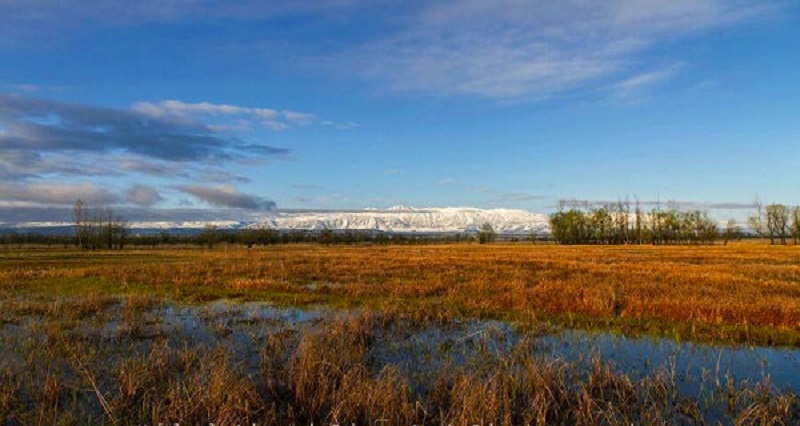
- J&K Lost 120 Hectares Of Wetland In 10 Years
- Habitat Destruction, Pollution; Overexploitation Of Aquatic Resources Key Reasons
Srinagar- Jammu & Kashmir is losing its green gold at an astounding pace, making eco activists and nature lovers worried about the downward trend. The latest jungle report has painted a grim picture as it states that J&K has lost 120 hectares of wetland in 10 years.
A report by the Ministry of Statistics and Programme Implementation (MOSPI), a ministry of Government of India concerned with coverage and quality aspects of statistics, found that J&K lost 120 hectares of wetland in 10 years from 2006-07 to 2017-18. That resulted in shrinking of wetlands from 1,64,230 hectares in 2006-07 to 1,64,110 hectares in 2017-18, or a loss of one wetland, taking the overall number to 403 wetlands against 404 in 2006-07.
In addition to the overall dwindling of wetlands, the research asserted that forest cover of Very Dense Forest (VDF) has decreased from 4,203 sq. Kms in 2017-18 to 4,155 sq. Kms in 2019-20.
However, indicating a positive trend in the total cover of Moderately Dense Forest (MDF) and Open Forest (OF), the data said that MDF cover increased to 8,117 sq. kms in 2019-20 against 7,952 sq.kms in 2017-18 and the OF cover increased from 8,967 sq. kms to 9,115 sq.kms from 2017-18 to 2019-20. These facts emerged from MOSPI’s report titled, ‘Envistats India 2022’.
According to the report, the main driving force behind the rapid depletion of wetlands and its biodiversity is the habitat destruction, pollution, overexploitation of aquatic resources, tourism and the introduction of invasive exotic species along with alien pathogens and parasites.
The report has also blamed the rapid urbanization and industrialization for disrupting the harmony between people and nature, “which is happening at an accelerated pace”.
Divulging the details of Ramsar sites in J&K, the data noted that against state’s overall 1,64,110 hectares of wetland, Surinsar-Mansar Lakes accounted for 350 hectares, Wular Lake 18,900 hectares, Hygam Wetland Conservation Reserve 802 hectares, Shallbugh Wetland Conservation Reserve 1,675 hectares and Hokera Wetland 1,375 hectares. The total percentage share of these five Ramsar sites is 14.08 percent.
As per the report, J&K’s geographical area Jammu & Kashmir was 2,22,236 sq km of which 20,199 or 9.09 percent was recorded forest area, 17,648 and 2,551 were Reserved Forests and Protected Forests.
In 2015-16, J&K’s total carbon stock was 2,75,926 ( in 1000 tonnes) including 1,12,919 Above Ground Biomass (AGB), 30,083 Below Ground Biomass(BGB), 1,004 dead wood, 3,529 litter and 1,28,39 Soil Organic Carbon, the report said.
However, in 2019-20, the carbon stock increased to 3,70,870 (1000 tonnes) including 1,63,897 AGB, 45,864 BGB, 3,386 Dead wood, 4,951 Litter and 1,52,772 SOC. The carbon stock refers to the amount of carbon stored in forests in the form of biomass, soil, deadwood and litter.
“In the western Himalayan region, The agrobiodiversity hotspot area covers the districts of Srinagar, Anantnag, Udhampur, Reasi, Kathua in Jammu & Kashmir,” reads the report.
Talking to Kashmir Observer, an official from the wildlife department said that encroachment of J&K’s wetlands has damaged the environmental balance.
“The available data clearly shows how J&K’s wetlands have been fragmented. The shrinking of wetlands has made our region highly susceptible to floods because wetlands act as natural sponges and flood protection systems. We need a comprehensive strategy to tackle this unprecedented situation,” the official said, wishing anonymity.
Follow this link to join our WhatsApp group: Join Now
Be Part of Quality Journalism |
Quality journalism takes a lot of time, money and hard work to produce and despite all the hardships we still do it. Our reporters and editors are working overtime in Kashmir and beyond to cover what you care about, break big stories, and expose injustices that can change lives. Today more people are reading Kashmir Observer than ever, but only a handful are paying while advertising revenues are falling fast. |
| ACT NOW |
| MONTHLY | Rs 100 | |
| YEARLY | Rs 1000 | |
| LIFETIME | Rs 10000 | |









